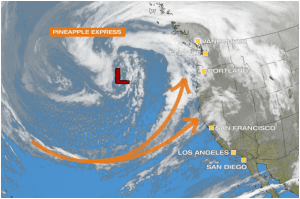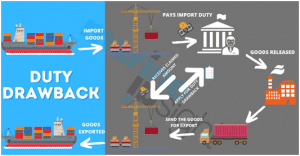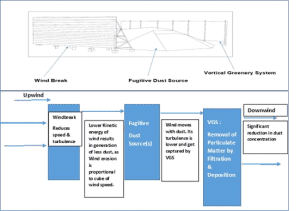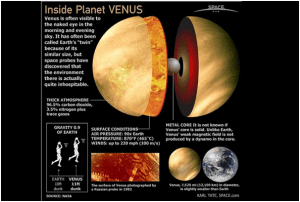GEOGRAPHY
1. PINEAPPLE EXPRESS PHENOMENON
TAGS: PRELIMS PERSPECTIVE-GS-I-GEOGRAPHY
THE CONTEXT: Over the past two weeks, California and other parts of the West Coast have been hit with a series of what meteorologists call atmospheric rivers.
THE EXPLANATION:
What is atmospheric river?
- These are the long, narrow regions in the atmosphere that transport most of the water vapor outside the tropics.
- These columns of vapor move with the weather, carrying an amount of water vapor roughly equivalent to the average flow of water at the mouth of the Mississippi River. When the atmospheric rivers make landfall, they often release this water vapor in the form of rain or snow.
- Although atmospheric rivers come in different shapes and sizes, for one to be a “true Pineapple Express,” location matters. The tail end, where the moisture is pulled into the atmosphere, must start near Hawaii. Then the river must stretch continuously through the atmosphere to the U.S. West Coast.
- Between 30% and 50% of the annual precipitation on the West Coast occurs from just a few atmospheric river events, according to the NOAA (National Oceanic and Atmospheric Administration) US Govt agency.
Where do they occur?
- They can occur anywhere across the world but they are most dominant over the West coast of Northern America taking up the moisture from Pacific ocean.
- They also occur at the eastern United States, where they often channel moisture from the Caribbean.
Consequences:
- Positive: They bring much desired rainfall to the coastal areas which in turn is beneficial for economic activities like agriculture, transportation, fisheries and water supplies etc.
- Negative: High intensity atmospheric rivers lead to torrential rainfalls, flash floods, landslides, snowfall, sheet erosion and strong winter storms.

POLITY AND GOVERNANCE
2. DEFAULT BAIL
TAGS: PRELIMS PERSPECTIVE-GS-II-POLITY AND CONSTITUTION
THE CONTEXT: Recent, the Supreme Court said that grant of default bail will not operate as an absolute bar to canceling it once the charge sheet is filed and the same can be considered if a strong case is made out.
THE EXPLANATION:
What is a Default bail?
- Also known as statutory bail, this is a right to bail that accrues when the police fail to complete investigation within a specified period in respect of a person in judicial custody.
- This is enshrined in Section 167(2) of the Code of Criminal Procedure (CrPC) where it is not possible for the police to complete an investigation in 24 hours, the police produce the suspect in court and seek orders for either police or judicial custody.
- Under Section 167(2) of the Code, a Magistrate can order an accused person to be detained in the custody of the police for 15 days. Beyond the police custody period of 15 days, the Magistrate can authorize the detention of the accused person in judicial custody i.e., jail if necessary. However, the accused cannot be detained for more than:
ninety days, when an authority is investigating an offense punishable with death, life imprisonment or imprisonment for at least ten years; or sixty days, when the authority is investigating any other offense.
- In some other special laws like Narcotic Drugs and Psychotropic Substances Act, this period may vary. For eg: In Narcotic Drugs and Psychotropic Substances Act, the period is 180 days.
- At the end of this period, if the investigation is not complete, the court shall release the person “if he is prepared to and does furnish bail”. This is known as default bail.
Principles:
- It is a right, regardless of the nature of the crime.
- The stipulated period within which the charge sheet has to be filed begins from the day the accused is remanded for the first time.
- It includes days undergone in both police and judicial custody, but not days spent in house-arrest.
- A requirement for the grant of statutory bail is that the right should be claimed by the person in custody.
- If the charge sheet is not filed within the stipulated period, but there is no application for bail under Section 167(2), there is no automatic bail.
- Once the accused files an application for bail under Section 167(2), it is considered that he/she has enforced the right to be released on default bail.
- This right only comes into place after the stipulated time limit for investigation has expired.
- If the accused fails to apply for default bail after the investigation time period has expired, and the investigating agency files a charge-sheet or seeks more time before the accused makes such an application for default bail, then the right of default bail is no longer applicable.
- The Magistrate can then grant further time for completion of the investigation. However, the accused may still be released on bail under other legal provisions of the Code.
Default Bail as Fundamental Right:
The Supreme Court while hearing an appeal regarding default bail said that default bail under first proviso of Section 167(2) of the Cr.P.C. is a fundamental right and not merely a statutory right as it is, a procedure established by law under Article 21 of the Constitution.
ECONOMIC DEVELOPMENTS
3. DUTY DRAWBACK SCHEME (DDS)
TAGS: PRELIMS PERSPECTIVE-GS-III-ECONOMY
THE CONTEXT: Recently the GST authorities found that exporters are misusing the government’s duty drawback scheme (DDS) by claiming it along with refunds of integrated goods and services tax (GST).
THE EXPLANATION:
Duty Drawback Scheme: Customs Act 1962
The duty drawback scheme allows exporters to get a refund on customs duties paid on imported products that:
- Are used or incorporated in other products for export
- Remain unused since importation
All the provisions in this scheme are described under Section 74 and Section 75 under the Customs Act, 19621.
As stated in these sections, the following conditions must be met to be able to claim duty drawback:
- If the imported goods are re-exported within two years from the date of payment of duty on the importation, then exporters can claim 98% of the duty paid.
To be able to claim duty drawback, the following aspects should be considered:
- Products being exported must be different from inputs
- Inputs refer to imported goods on which customs and taxes have been paid
- Products utilized in making the goods for export must have undergone a physical change
- Number of inputs utilized in processing export products per piece must not be uniform
The government fixes a rate of drawback (for different types of goods) to be paid per unit of the final product at the time of exports. This rate depends on how verified the mode of manufacturing, raw materials used, amount of duty paid on inputs and standards of making the final product are.
Duty drawback might not be allowed under the following conditions:
- Export value of products is less than the value of imported products.
- If the sale of finished products is not received by the exporter within the allowed time, then drawback shall be deemed by the government.

ENVIRONMENT AND ECOLOGY
4. NEW DUST CONTROL TECHNOLOGY
TAGS: PRELIMS PERSPECTIVE-GS-III-ENVIRONMENT
THE CONTEXT: Recently, Central Mine Planning and Design Institute Limited (CMPDIL) invented method for Controlling Generation and Movement of Fugitive Dust.
THE EXPLANATION:
- It aims to minimize and control the fugitive dust in mining areas.
- Useful in Coal Mines, Thermal Power Plants, Railway Sidings and Ports
- It will help in reducing the dust generation from open sources.
- it will provide noise attenuation.
- Fugitive dust is a type of particulate matter that causes air pollution because it is produced by many sources but is released into the atmosphere without passing through a confined flow stream.

VALUE ADDITION:
About Central Mine Planning and Design Institute Limited (CMPDIL):
- CMPDIL is a Government of India enterprise having its corporate headquarters at Ranchi in India.
- It is a fully owned subsidiary of Coal India Limited (CIL) and a Schedule-B company.
- It is a Mini Ratna (Category I) company since June 2019 and ISO 9001 certified since March 1998.
- In January 1974, CMPDI started functioning as a division of the then recently constituted Coal Mines Authority Limited (CMAL), and the planning wing of erstwhile National Coal Development Corporation (NCDC) forming its nucleus.
- In November 1975, CMAL was merged to form Coal India Limited, and CMPDI attained the status of a public limited company under CIL with declared scope of its business under its Memorandum of Association broadly in line with its original proposal.
SCIENCE AND TECHNOLOGY
5. SHUKRAYAAN-1
TAGS: PRELIMS PERSPECTIVE-GS-III- SPACE TECHNOLOGY
THE CONTEXT: An advisor to the space science programme recently said that the Indian Space Research Organisation is yet to receive approval from the Indian government for the Venus mission and that the mission could as a result be postponed to 2031.
THE EXPLANATION:
About SHUKRAYAAN-1?
- It is also called the Venus Mission.
- The Shukrayaan I mission will be an orbiter mission.
- Its scientific payloads currently include a high-resolution synthetic aperture radar and a ground-penetrating radar.
- The mission is expected to study Venus’s geological and volcanic activity, emissions on the ground, wind speed, cloud cover, and other planetary characteristics from an elliptical orbit.
- Optimal launch windows from Earth to Venus occur once every 19 months.
About Venus
- Venus is often called “Earth’s twin” because they’re similar in size and structure, but Venus has extreme surface heat and a dense, toxic atmosphere.
- It rotates very slowly on its axis – one day on Venus lasts 243 Earth days.
- The thick atmosphere of Venus traps heat creating a runaway greenhouse effect – making it the hottest planet in our solar system.
- Phosphine, a possible indicator of microbial life, has been observed in the clouds of Venus.
- Unlike the other planets in our solar system, Venus spins clockwise on its axis.

Spread the Word

